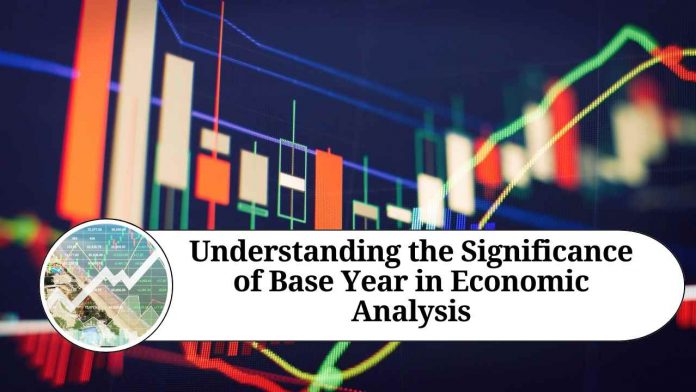Introduction
In economic analysis and forecasting, the concept of a base year plays a crucial role. It serves as a reference point for measuring and comparing economic data over time. By establishing a base year, economists can assess changes in various economic indicators, such as GDP, inflation, and consumer prices, providing valuable insights into the performance and trends of an economy. In this blog post, we will delve into the definition, purpose, and importance of a base year in economic analysis.
Defining the Base Year: The base year refers to a specific period in time that serves as a benchmark for measuring economic variables or indices. It is typically chosen based on certain criteria, such as stability, representativeness, and availability of comprehensive data. Once the base year is established, subsequent years can be compared to it to assess the changes that have occurred in the economy.
The Purpose of a Base Year: The primary purpose of selecting a base year is to provide a reference point against which changes in economic indicators can be measured. It allows economists to analyze the relative growth or decline of key variables over time, facilitating comparisons and highlighting trends. By using a consistent base year, policymakers, researchers, and analysts can make informed decisions, evaluate policy effectiveness, and identify areas of concern within an economy.
Key Economic Indicators and Base Year
Various economic indicators are commonly analyzed using a base year, including:
- Gross Domestic Product (GDP): GDP measures the total value of goods and services produced within a country’s borders. Using a base year, economists can determine the percentage change in GDP over time, indicating the economic growth rate.
- Consumer Price Index (CPI): The CPI measures changes in the average prices of a basket of goods and services consumed by households. Comparing the CPI to the base year provides insights into the rate of inflation or deflation.
- Producer Price Index (PPI): The PPI measures changes in the average prices received by producers for their goods and services. It is used to monitor inflationary pressures at the producer level and analyze price trends in different sectors.
- Employment and Unemployment Rates: The base year can be used to examine changes in employment levels and the overall unemployment rate. By comparing employment data to the base year, economists can assess the impact of economic policies on the labor market.
Importance of Base Year Selection
The selection of an appropriate base year is crucial for accurate economic analysis. It should ideally represent a period of relative stability, where economic fluctuations are minimal. Additionally, the base year should reflect the economic structure and composition of the country or region under study. Careful consideration is given to ensuring that the base year represents a typical or normal economic environment, allowing for meaningful comparisons with subsequent years.
Conclusion
The concept of a base year provides a vital framework for economic analysis and forecasting. By establishing a reference point, economists can assess changes in economic indicators, track trends, and evaluate policy effectiveness. The selection of an appropriate base year is critical, as it sets the foundation for meaningful comparisons over time. As economic landscapes evolve, understanding the significance of the base year becomes increasingly important for policymakers, businesses, and researchers, enabling them to make informed decisions and gain insights into the performance of economies.
Other Related Blogs: Section 144B Income Tax Act
Frequently Ask Question
Q1: What is a base year?
A base year refers to a specific period in time that serves as a benchmark or reference point for measuring and comparing economic data. It is chosen to provide a consistent point of comparison for analyzing changes in economic indicators over time.
Q2: How is the base year selected?
The selection of a base year involves careful consideration of several factors. It should represent a period of relative stability in the economy, ideally with minimal fluctuations. The base year should also be representative of the economic structure and composition of the country or region under analysis. Availability of comprehensive and reliable data is another important consideration.
Q3: What are the key economic indicators that use a base year?
Several economic indicators utilize a base year for analysis. These include Gross Domestic Product (GDP), Consumer Price Index (CPI), Producer Price Index (PPI), and employment and unemployment rates. The base year allows economists to measure changes in these indicators over time and understand trends in the economy.
Q4: Why is the base year important in economic analysis?
The base year is essential because it provides a consistent reference point for measuring changes in economic variables. It allows economists to compare different periods and assess the relative growth or decline of indicators. By using a base year, policymakers, researchers, and analysts can make informed decisions, evaluate policy effectiveness, and identify areas of concern within an economy.
Q5: Can the base year change over time?
Yes, the base year can change over time, although it is typically fixed for a certain period to ensure consistency in analysis. As economic conditions evolve and new data becomes available, economists may update the base year to reflect more recent and relevant economic trends.
Q6: How does the base year affect inflation calculations?
Inflation calculations are based on changes in consumer prices over time. By comparing current prices to those in the base year, economists can calculate the inflation rate. The choice of base year influences the starting point for these calculations, which can affect the interpretation of inflation trends.
Q7: Can different countries have different base years?
Yes, different countries can have different base years depending on their economic circumstances and data availability. Each country may choose a base year that best represents its economic structure and composition. Consequently, when comparing economic indicators between countries, it is essential to consider the respective base years to ensure accurate and meaningful comparisons.
Q8: Does the base year have any limitations?
While the base year is a valuable tool in economic analysis, it does have limitations. Economic conditions and structures change over time, and using a fixed base year may not capture all relevant aspects of an evolving economy. It is crucial to consider other factors and indicators alongside the base year for a comprehensive understanding of economic trends.
Q9: Is the base year used only in macroeconomic analysis?
No, the base year is used in both macroeconomic and microeconomic analysis. It provides a reference point for analyzing changes in broader economic indicators (macroeconomics) such as GDP and inflation, as well as for comparing individual data points or variables (microeconomics) to assess relative changes over time.
Q10: Can the base year be adjusted retrospectively?
In certain cases, economists may revise historical data and adjust the base year retrospectively. These adjustments aim to account for changes in methodology, improvements in data quality, or revisions in economic statistics. However, such adjustments are typically communicated transparently, and the original base year remains relevant for historical comparisons.




















